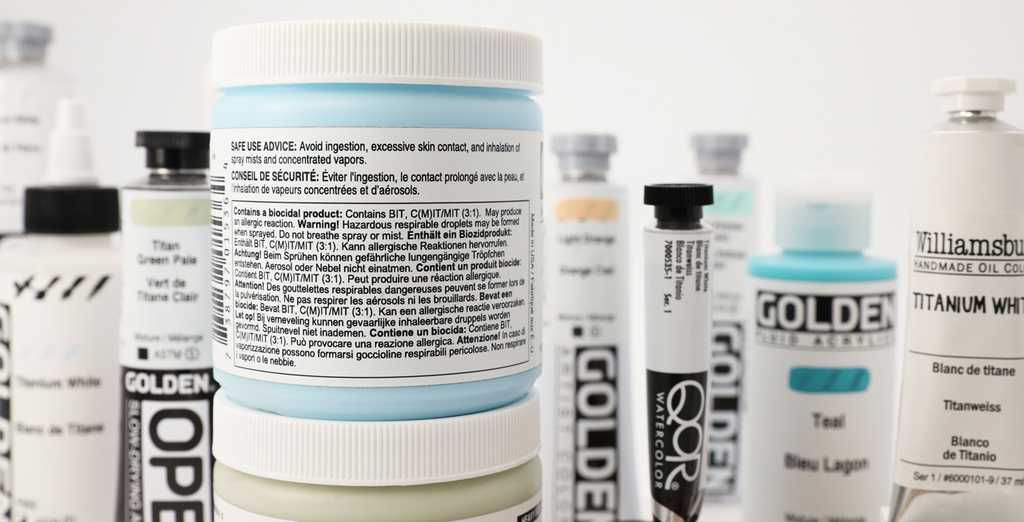Q&A: Titanium Dioxide Labeling Requirements for Europe
December 16, 2021
 |
 |
Q 1: What is titanium dioxide?
Answer: Titanium dioxide is a white pigment with excellent light scattering properties in paints and inks hiding the underlying surface. Besides paints and inks, it finds its applications in industrial applications and consumer goods (and has been for almost 100 years) in products such as plastics, textiles, ceramics, construction materials, cosmetics, food, and pharmaceuticals.
See also https://tdma.info/what-is-titanium-dioxide/
Titanium is the ninth most abundant element in the world and titanium dioxide is the oxide of the metal, which occurs naturally in rocks and ores.
Q 2: Why is titanium dioxide used in paints?
Answer: As a pigment, titanium dioxide is used in over 90% of paint and ink products, to decorate and to protect surfaces / objects in both consumer and industrial settings. Titanium dioxide has excellent light-scattering properties and is used in a variety of applications to achieve whiteness, covering power, brightness, stability and durability of colour that cannot be achieved with other raw material that require white opacity and brightness.
Q 3: What exactly is the classification about?
Answer: With this classification the European Commission responds to an observation that the carcinogenic hazard of this substance arises when respirable titanium dioxide dust is inhaled in excessive quantities leading to significant impairment of particle clearance mechanisms in the lungs of rats only. Such effects were observed in a study when the rats were exposed to levels of titanium dioxide that would mean approximately 40 times the maximum a worker might be exposed to in his job.
The exact nature of the regulators’ concern is explained in Note W of the classification, which reads as follows: ‘It has been observed that the carcinogenic hazard of this substance arises when respirable dust is inhaled in quantities leading to significant impairment of particle clearance mechanisms in the lung’.
The classification will only affect products in a powder form, so end users using liquid paints, coatings or inks will not be affected. For powder coatings see further under Q8.
In consideration of applications that may form respirable dust or droplets, the classification furthermore introduces the requirement to label liquid and solid mixtures with warning statements (EUH210, EUH211, EUH212).
For liquid paints, coatings, and printing inks the following warning statement will be required on packaging 18 months after the classification enters into force (estimated mid-2021): EUH211: ‘Warning! Hazardous respirable droplets may be formed when sprayed. Do not breathe spray or mist’.
Q 4: Is the Titanium dioxide in paints and inks harmful to health?
Answer: No. The powder form of titanium dioxide presents no risk. It is not volatile and consumers and professionals using paint, coatings, printing inks or wallcoverings products cannot be exposed to lung overload of the dust particles of titanium dioxide.
Q 5: Is there any harm when liquid paints with titanium dioxide are sprayed?
Answer: No, although when spraying, users are advised to use appropriate personal protective equipment, including mask and goggles.
Q 6: When I am using paint for decorating a room or as hobby material on a canvas my hands may come in contact with the paint. Is there a risk associated with this?
Answer: No. The titanium dioxide in the wet or dry paint on your hand does not represent any risk. Under normal use conditions it is always advised by the supplier to avoid skin contact with the wet paint. Cleaning your hands from spoiled paint (wet or dry) in a timely manner is advised.
Q 7: Is paint safe once applied on walls and doors?
Answer: Yes. Titanium dioxide is a solid particle that is embedded into a solid polymer layer on the covered surfaces. There is no risk of these particles loosening from the dried film, hence no chance of inhaling or ingesting these particles.
Q 8: Are powder coatings safe to use?
Answer: Due to the classification of titanium dioxide in powder form the powder coatings containing titanium dioxide will have to be classified in as far as they have particles below the 10 micro-meter threshold. If so, they have to carry a mandatory warning label with the pictogram GHS08 (health hazard), the signal word ‘Warning’ and the hazard statement H351 ‘Suspected of causing cancer’.
Powder coatings are only supplied for industrial use, and are safe to use while workers at factories using powder coatings are protected from small particle dust by occupational health legislation across Europe, and applying powder coatings with a dust mask is already normal procedure.
Q 9: The proposed classification is for the dust of the white pigment that is one of the main ingredients used in paints. What about the dust that comes from sanding old paint layers? How dangerous is that?
Answer: Sanding of an old paint layer creates paint dust; however, it does not result in free titanium dioxide particles. Such sanding dust is a mixture of all the solid ingredients in the paint and are held together by a polymer structure in which the titanium dioxide particles are firmly embedded. As a general precaution one should always protect oneself from the risk of inhaling dust whether that be sanding dust or sawing dust etc. Using respiratory filters (dust masks) is strongly recommended.
CEPE is the European Council of the Paint, Printing Ink and Artists’ Colours industry EUPIA is the European Printing Ink Association, a sector group of CEPE
EuACA is the European Artists’ colours Association, a sector group of CEPE

